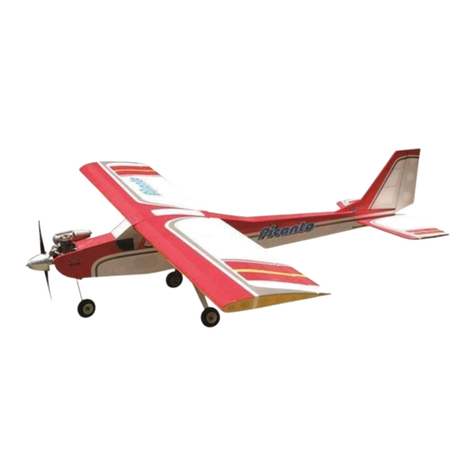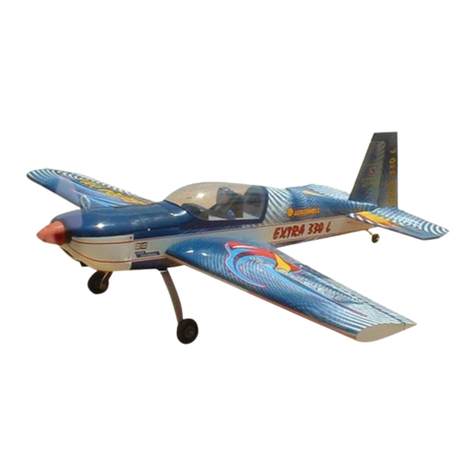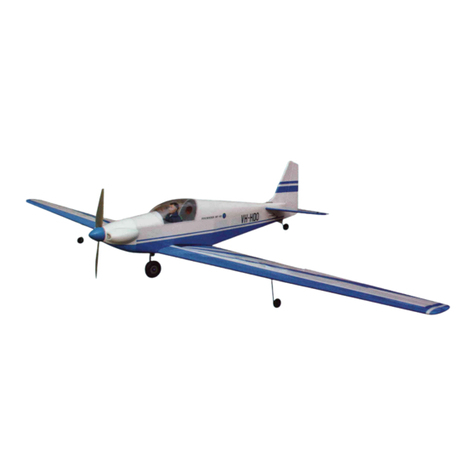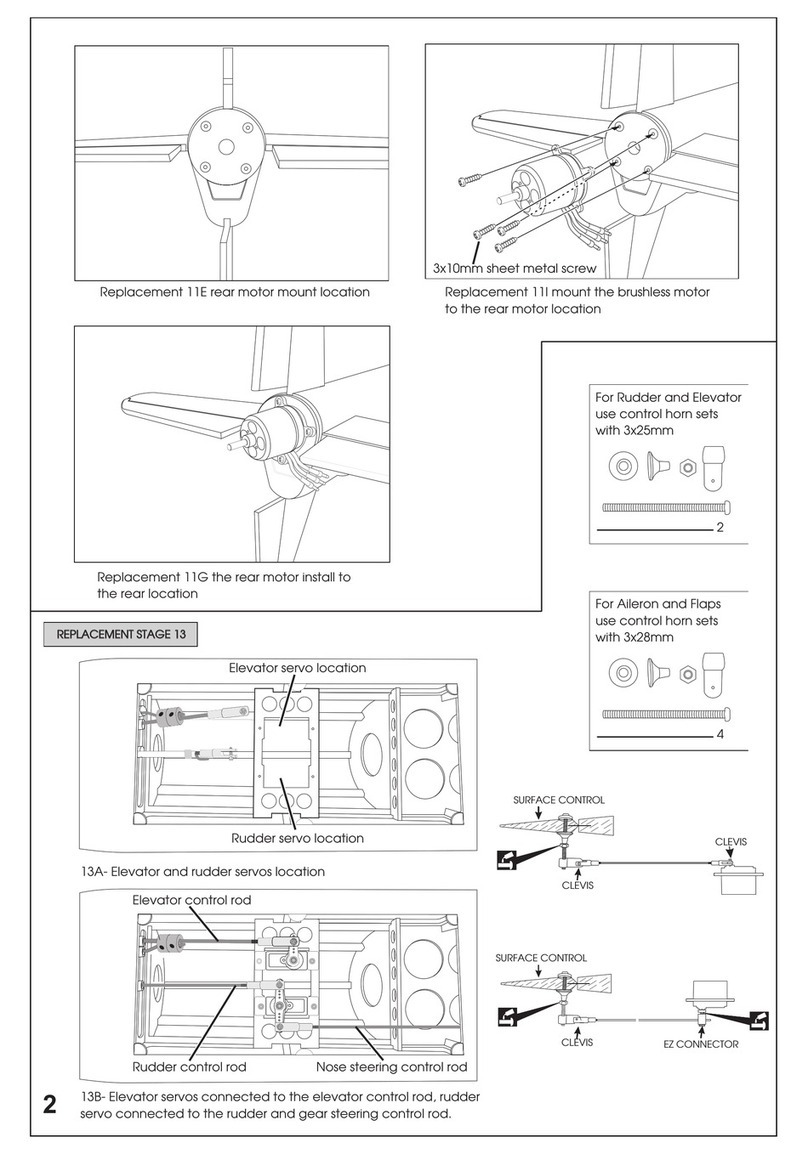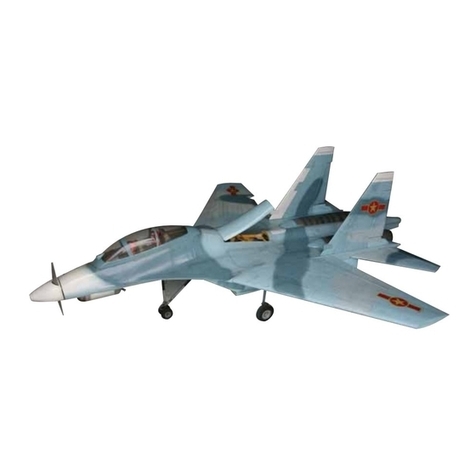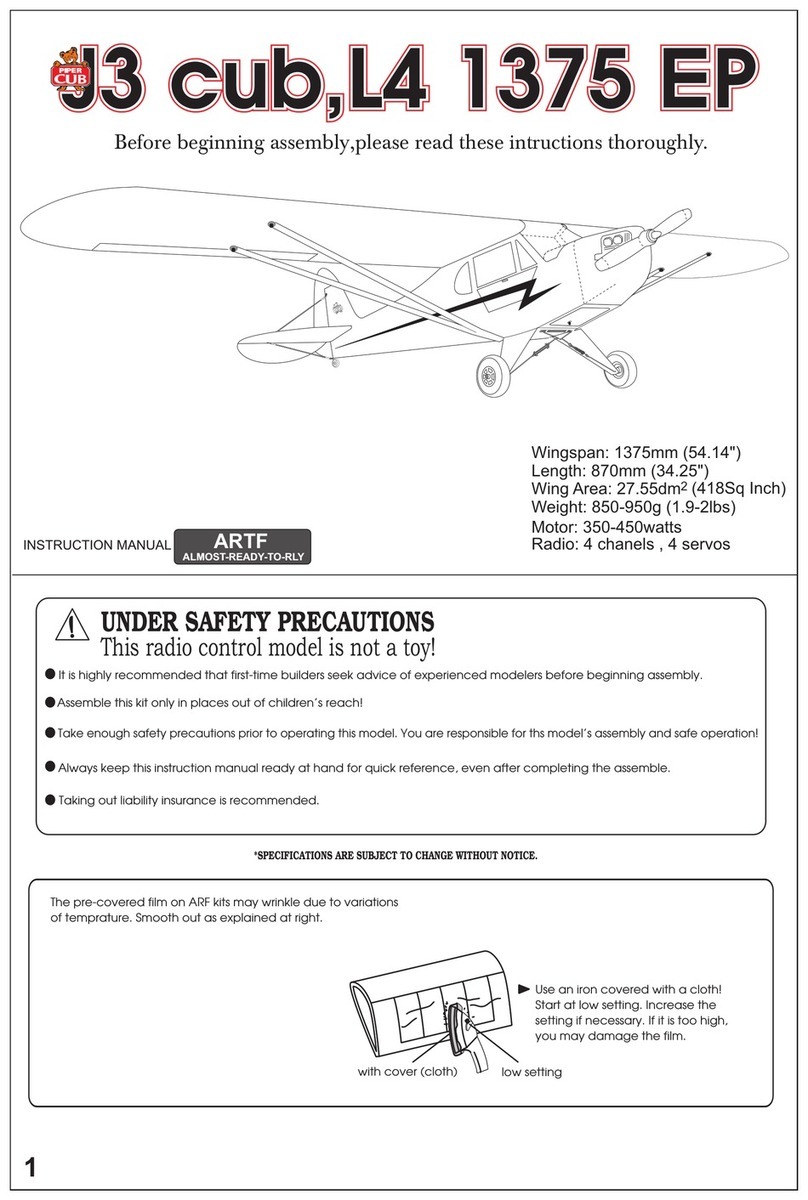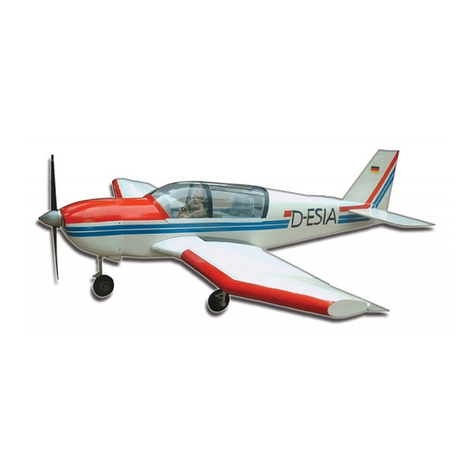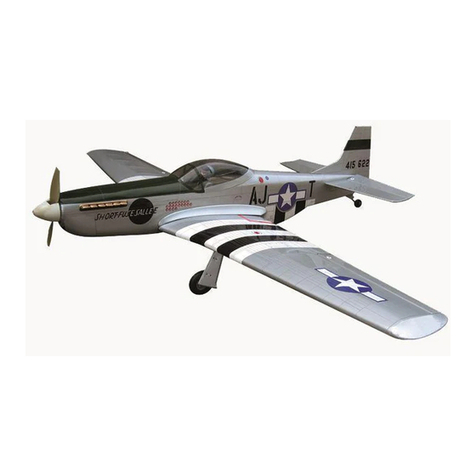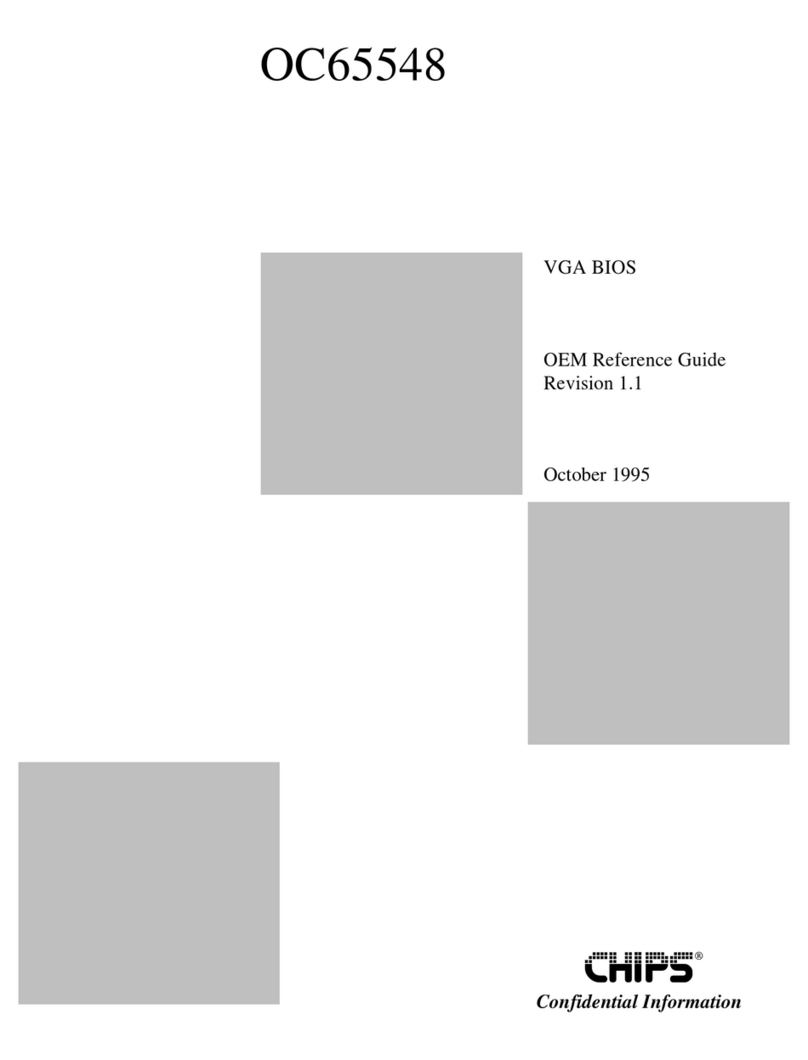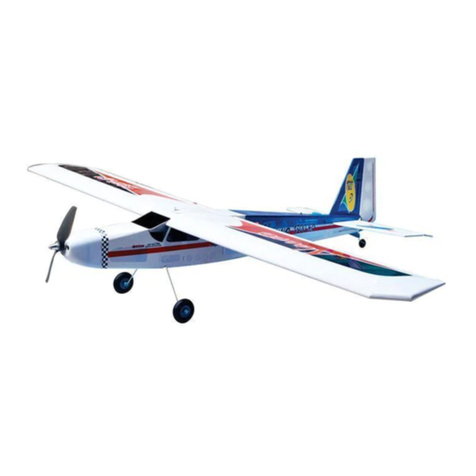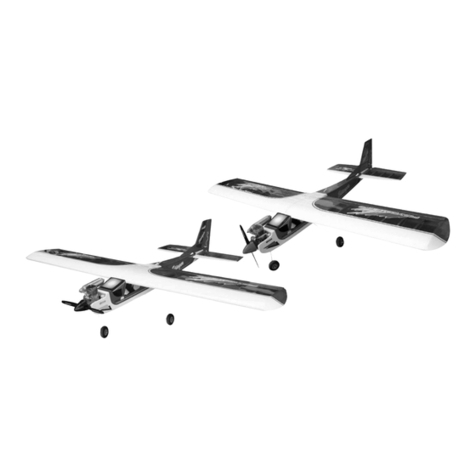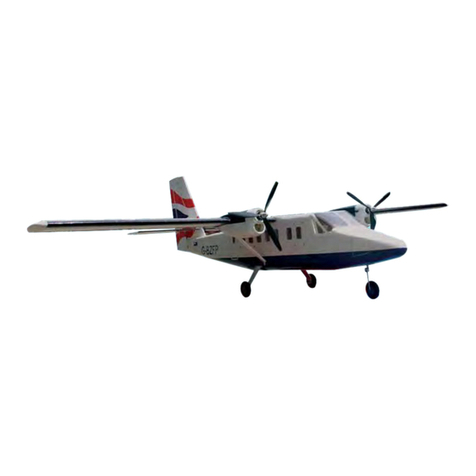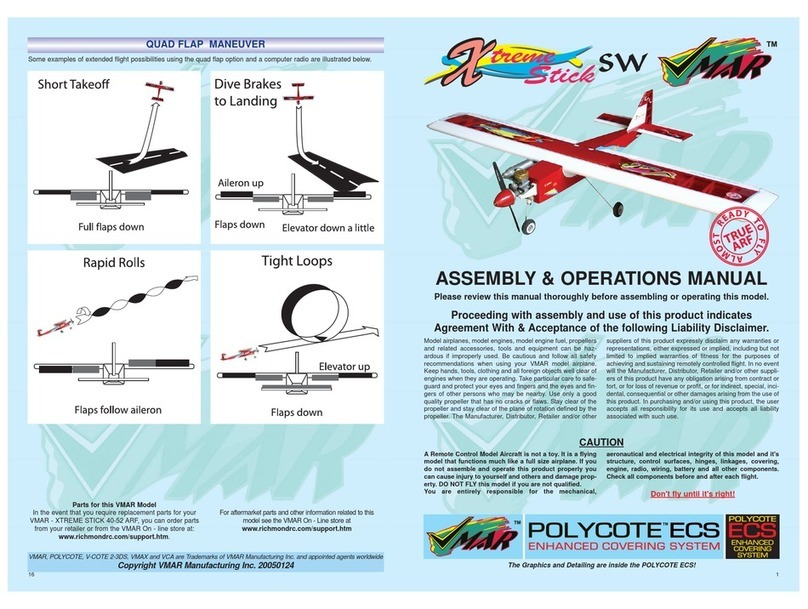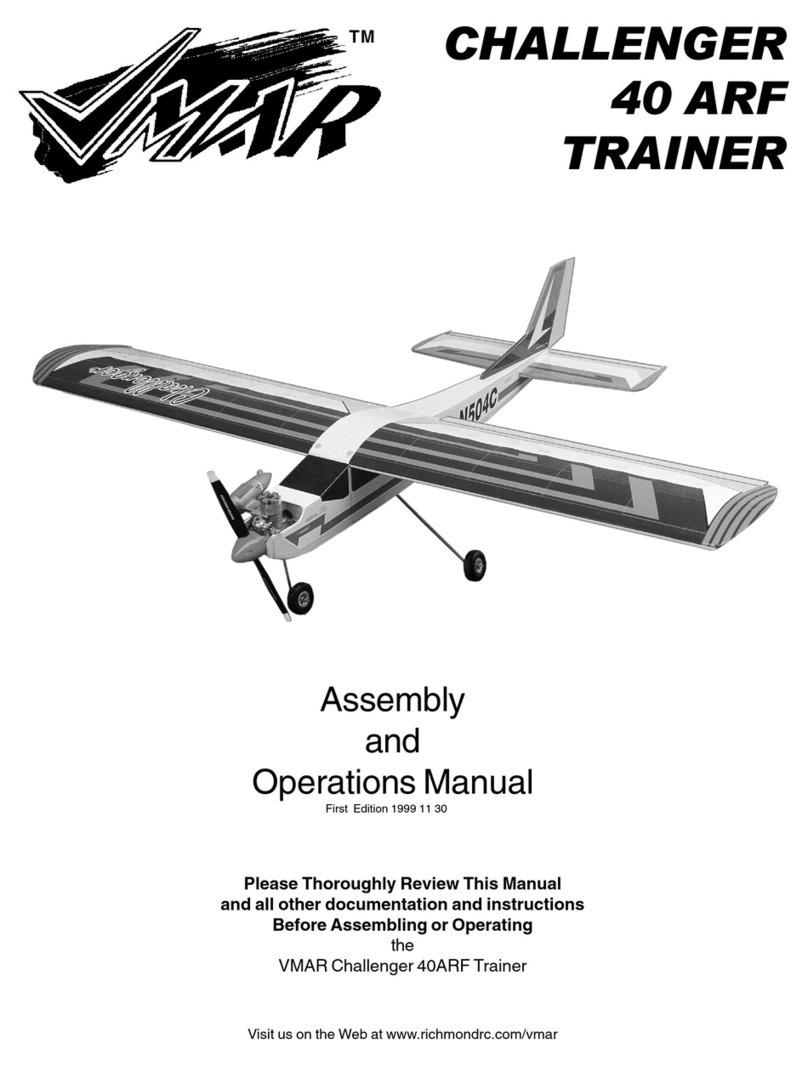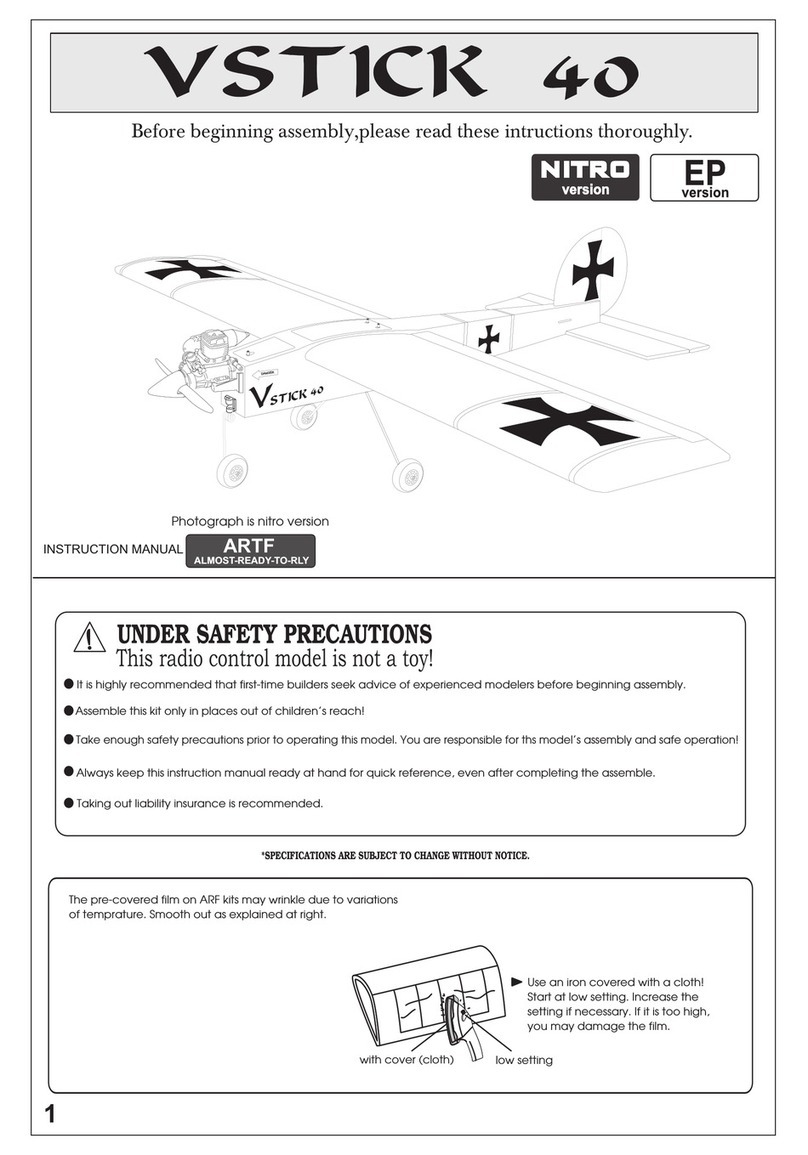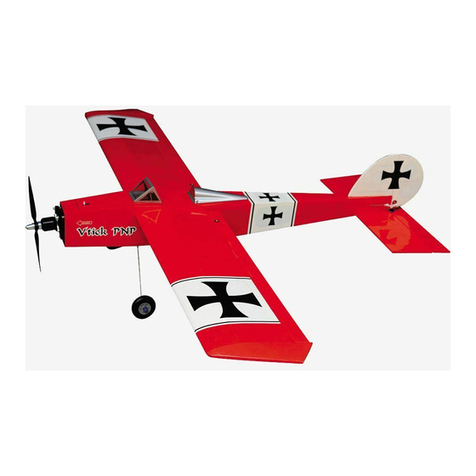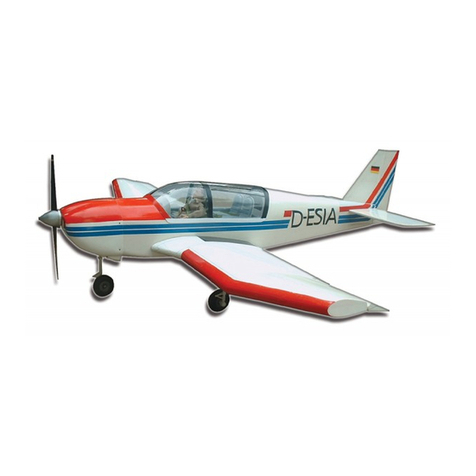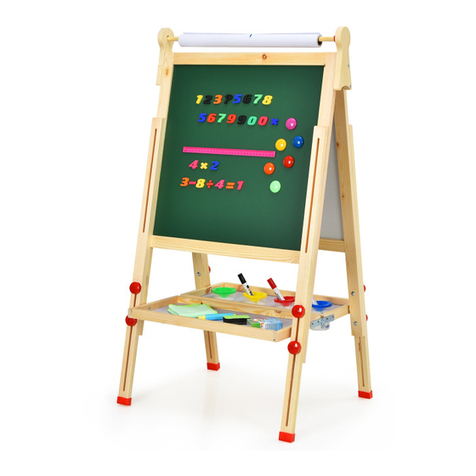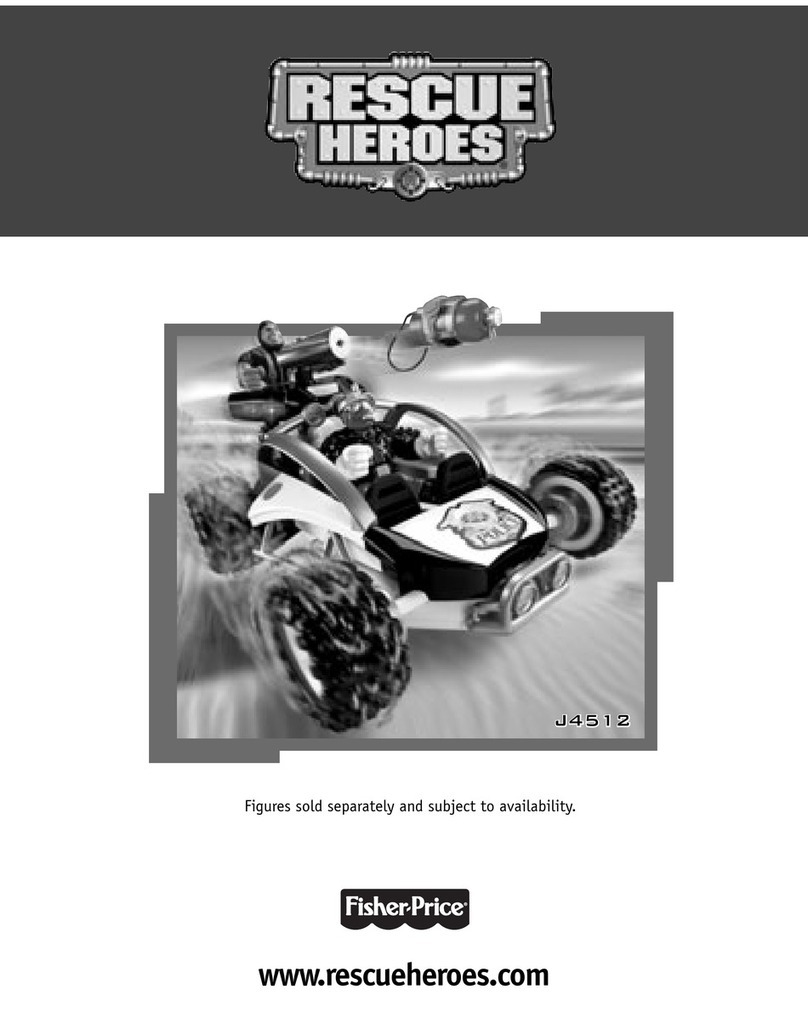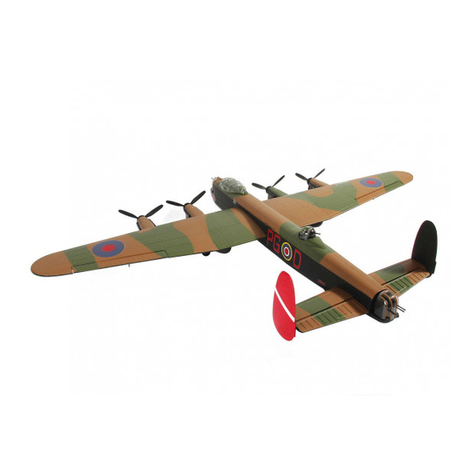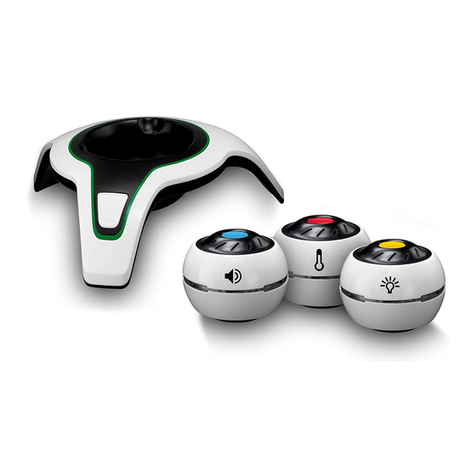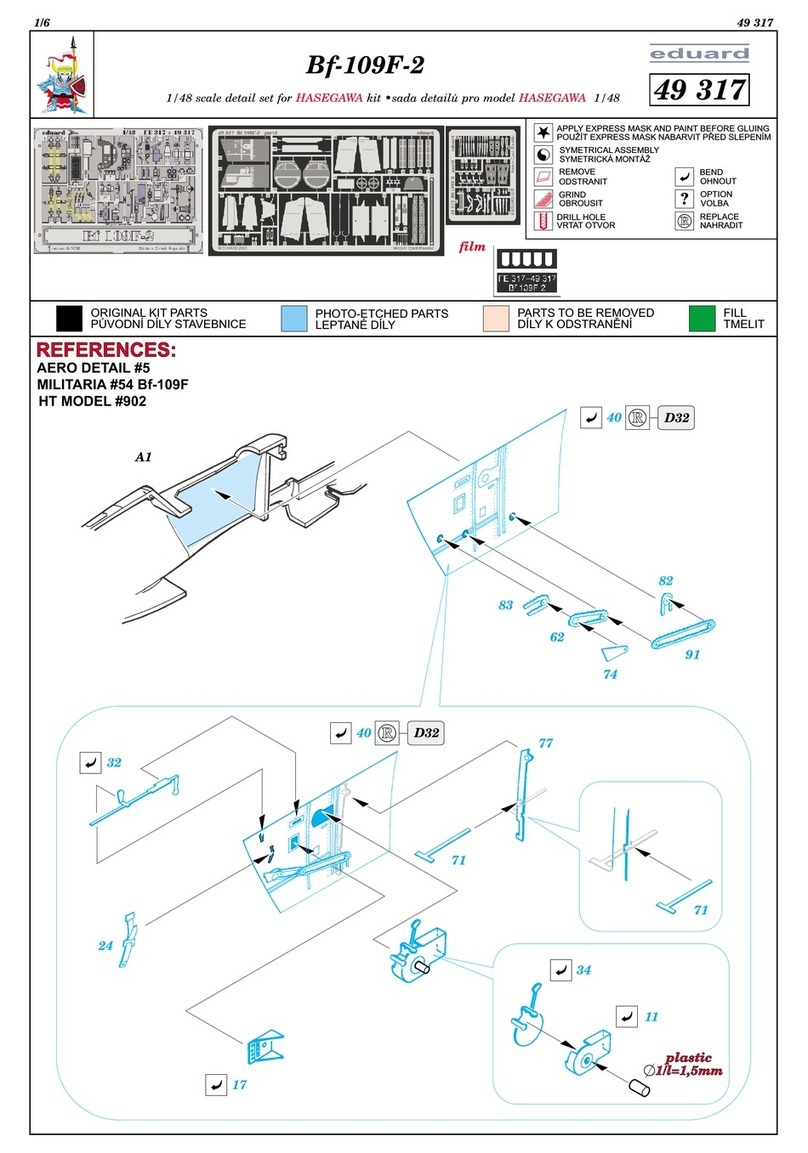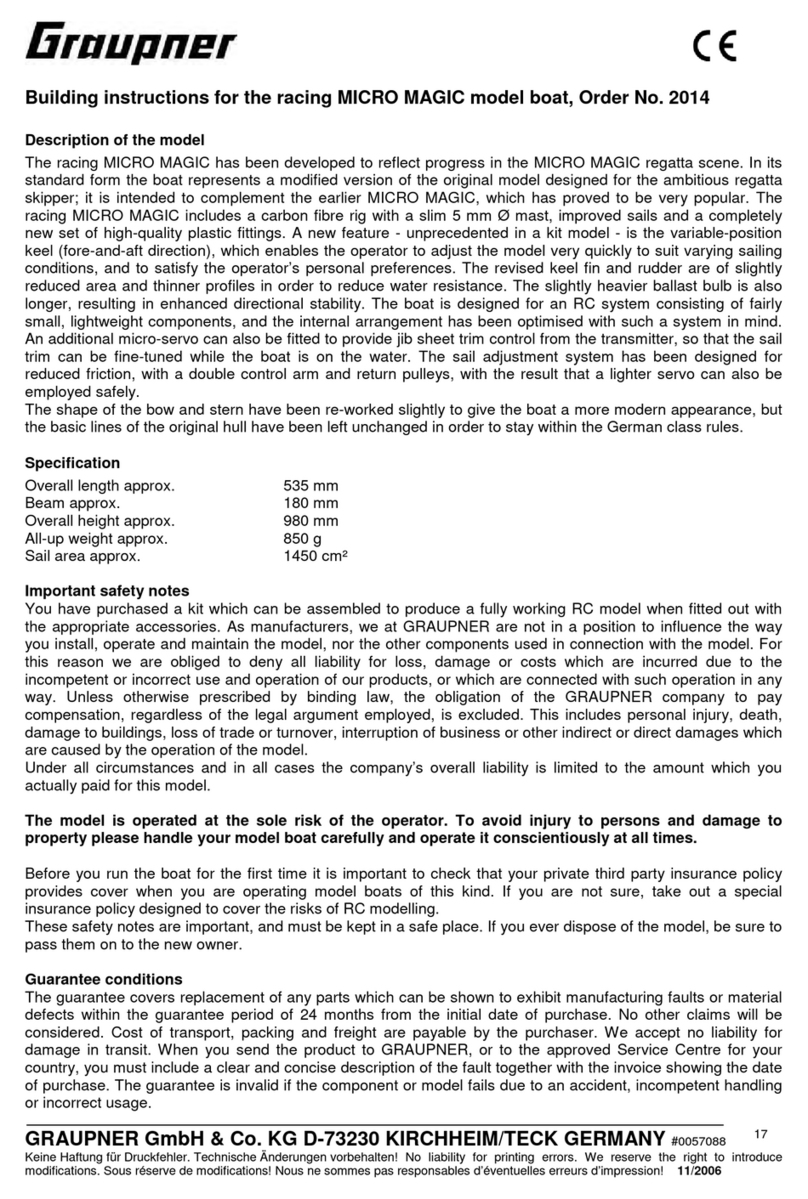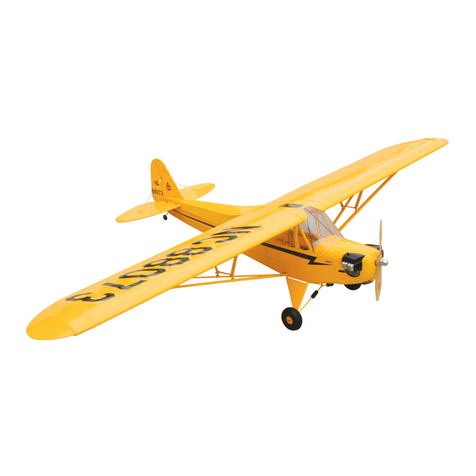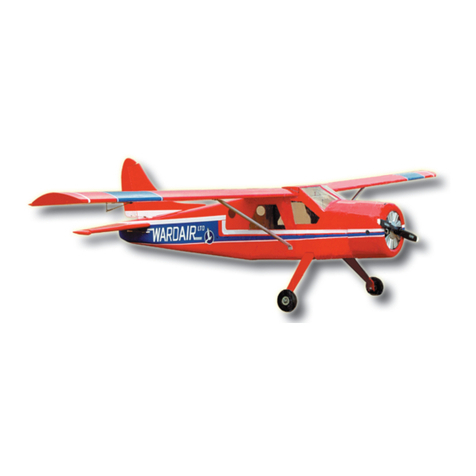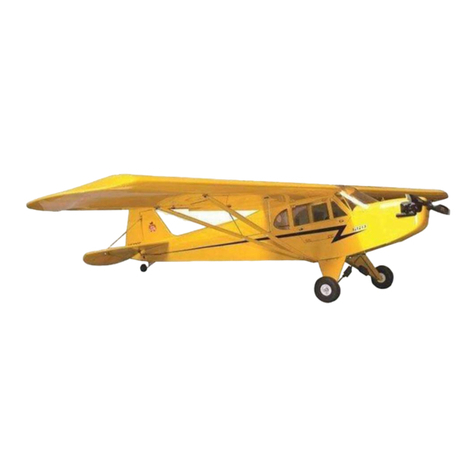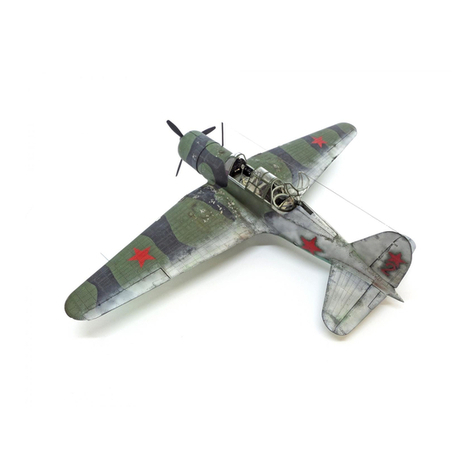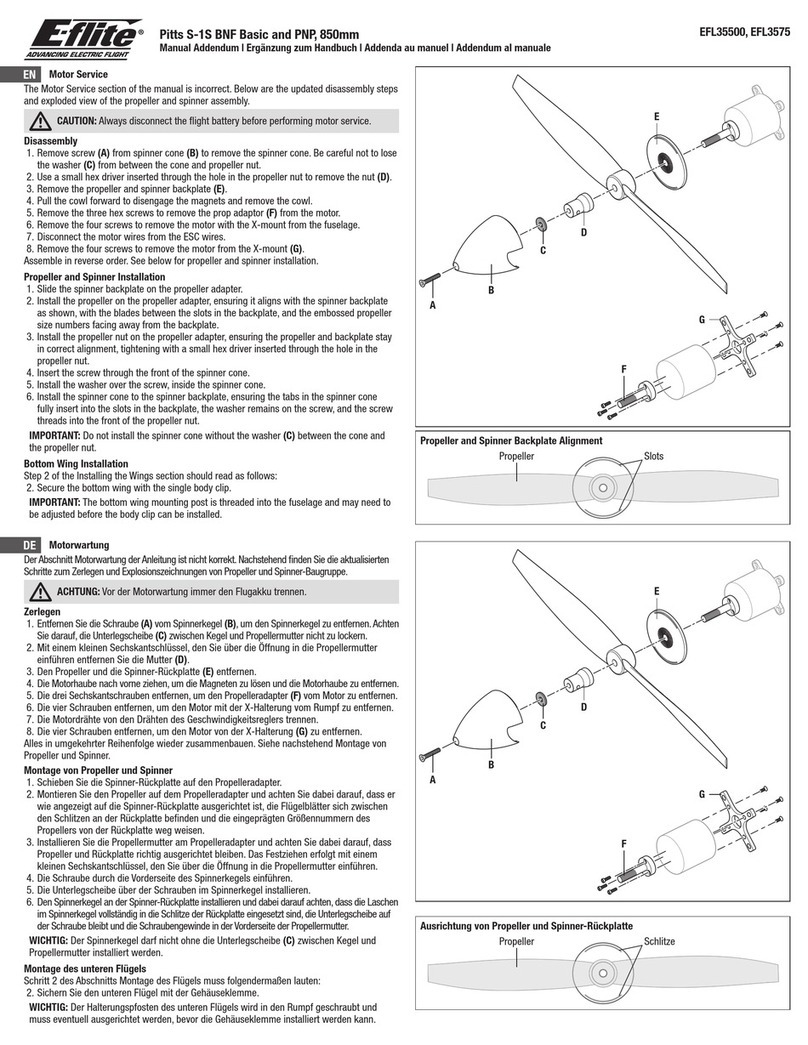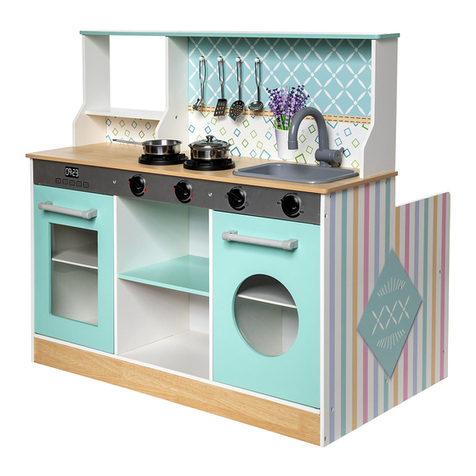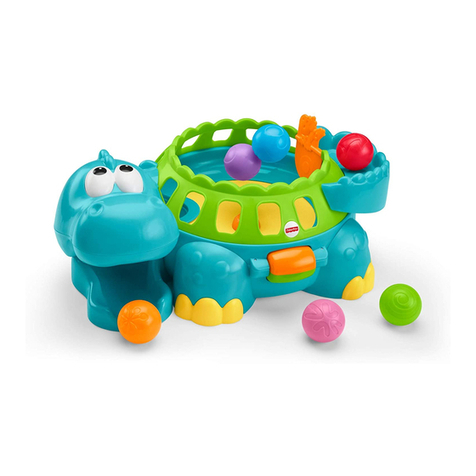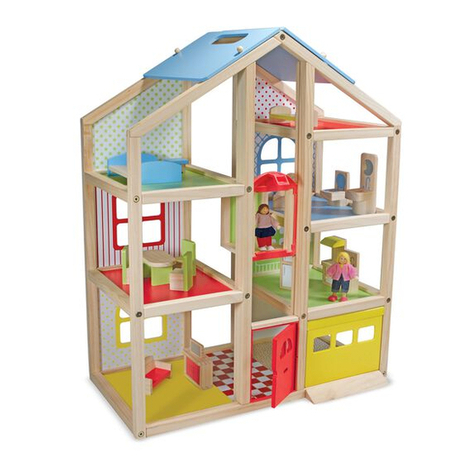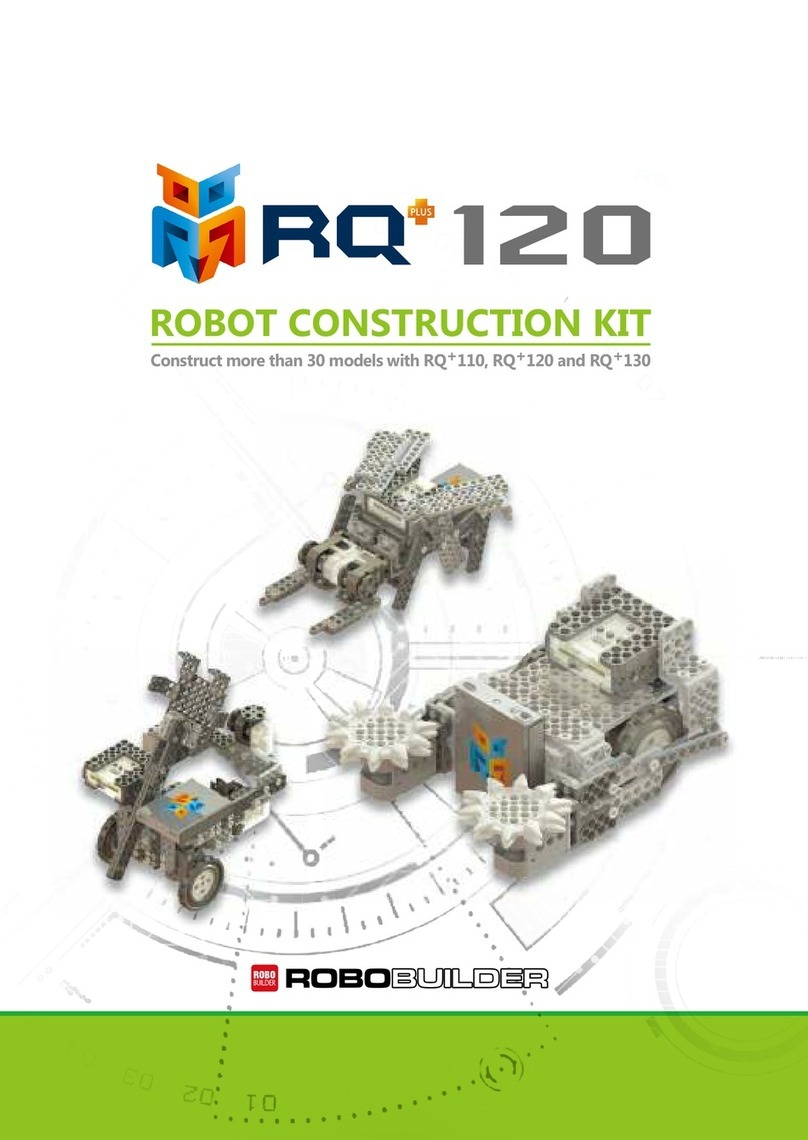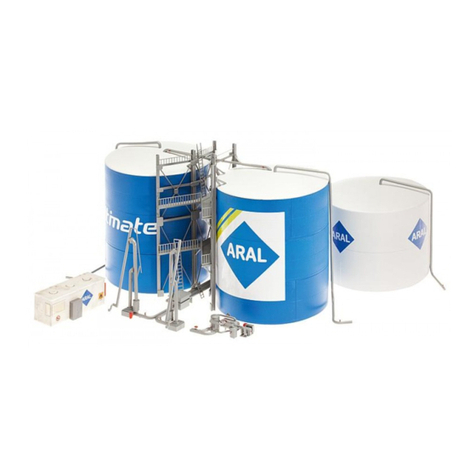so that the forward edge of the masking tape just butts up against theaft edge og the cowl.
6) Remove the real cowl from the model.
7) Install your engine mount and engine and muffer onto the model. Orient the engine to the possition you
want...i.e upright, rotated 45 degrees inverted ect. Make sure the muffer and the carburetor are installed. When
selecting which orientation you want for the engine you need to keep inmind operational considerations... the
muffer for examle must clear the sides of the fuselage by at least 5mm and carburetor throttle arm must be con-
nectable to the thottle control rod running forward through the firewall from the throttle servo. Lastly, the fuel
lines coming through the stopper hole in the run to the muffer pressure tap and the carburetor fuel nipple.
8) Once you have positioned your engine mount and engine, secure them to the forward firewall of the power
module and install the forward firewall onto the model using the four mounting studs, nuts and washers. We rec-
ommend setting the forward firewall at zero degrees offset thrust for now. Use the same number of washers and
nuts on all four studs. You can adjust a bit of right or down thrust into the firewall later if required.
9) Remove the muffer and carburetor from the engine. Set the muffer and carburetor aside. Be careful not to
lose any parts.
10) Now try to fit the dummy cowl on to the fuselage. You will find that the dummy cowl will likely be obstructed
by the engine as you try to install it. Assuming you are using the recommended clear sheet material you will be
able to see whre the obstruction begins. Using a left tip marker mark the area onthe dummy cowl to fit over the
engine.
11) Remove the dummy cowl and cut away the area that you have marked. We suggest cutting away less than
you think at first and expanding the cut out area in small incremental steps. Repeat this trial and error process
until the dummy cowl can be installed with rear edge of the dummy cowl aligned with the forward edge of the
line of tape onthe fuselage. You will have to repeat this process numerous times and we recommend working
in small steps. If you overdue a cut, use masking tape to ftll in the over cut area.
12) Once you can install the dummy cowl over the engine, remove the dummy cowl and install the carburetor
back on the engine.
13) Now try to fit the dummy cowl on to the fuselage with the carburetor in place. You will find the carburetor-
may obstruct the dummy cowl as you try to fit the dummy cowl into place. Mark the arear on the dummy cowl
where you have to make a cutout for the carburetor...remove the dummy cowl, cut out the area carefully and try
again. Repeat this trial and error process until the dummy cowl can be installed over the engine and carburetor
properly. Now check that you have acess to the needle valve and idle mix screws and any other carburetor
adjustment settings...cut out access holes and areas to provide access.
14) We are just about done with the dummy cowl work.. one more step! Install the muffer back on to the engine.
15) Now try to fit the dummy cowl on to the fuselage with the muffer in piace. You will find that the muffer will
obstruct the dummy cowl as you try to fit the dummy cowl into place. Mark the area on the dummy cowl where
you have to make a cutout for the muffer... remove the dummy cowl, cut out the area careflly and try again.
Repeat this trail and error process until the dummy cowl can be installed over the engine, Carburetor and muf-
fer properly.
16) Once you have the dummy cowl fitting onto the fuselage over the engine muffer and carburetor you are
ready to work on the real cowl. Take the dummy cowl and apply it over the real cowl. Align the registration marks
you made earlier. Using a fetl tip non-permanent marker, trace around the inside of the cutout areas of the
dummy cowl...transferring the outline of the cutout areas to the real cowl.
17) To carve the cut out areas in the fiberglass cowl we recomment using a half inch drum sander and a Dremel
tool. Usee glasses and avoid the fiberglass dust. Wear gloves and a mask. Work in an erea with good ventila-
tion. If you do not have a drum sander and Dremel tool, use a 1/8” drill to make a series of filot holes around
the cut area and then enrlage the drill holes until you can insert a rough hand file. Then expand the cut out areas
using the file. In either case, start from the interior of a cut out area and work outwards towards the perimeter
line you drew on the cowl with the marker. Trial fit the cowl onto the engine and fuselage frequently as you go.
Expand the cut out areas until the cowl fits with its aft edge adjacent to the tape line that you applied to the fuse-
lage.
18) Now adjust the alignment of the cowl so that the engine crankshaft is centered in the hole in the front face
of the cowl.
19) Remove the tape line from the fuselage and move the cowl fore or aft until the foreward face of the engine
19




















